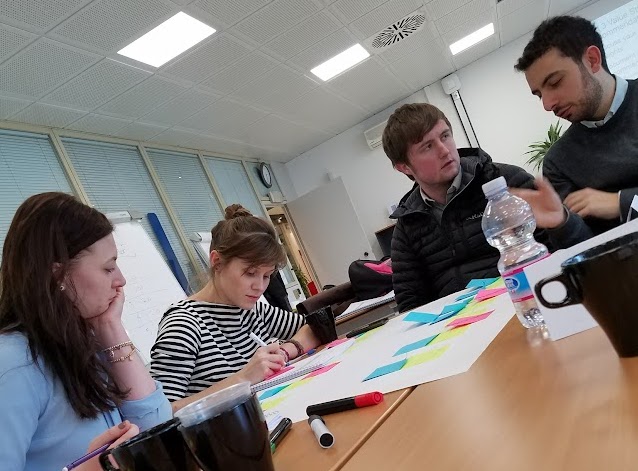Unconscious bias: you know what it is, but what good is a fact without action? Let’s dive into some tips and practices for how you can take the first steps to deal with biases in the workplace.
First and foremost, unconscious bias is normal: everyone has it and, unfortunately, it is not something we can completely control.
Therefore, when framing the conversation around unconscious bias rather than using blame or shame, look at this as an opportunity: what are the goals of your team or company this year? Within the next 5 years? 10 years?
Opening up a dialogue around bias, working to shift the culture of a work environment to be both more inclusive and diverse, are integral to allowing for the most innovation and success to happen. As a leader of such conversations, it is also key to lead by example. In beginning these conversations, humanize the conversation: it is a process of unlearning and relearning. That can get uncomfortable, but success in this process can only happen once we step outside of our comfort zone. So, as a leader, embrace the discomfort – show that it is okay, even necessary, to welcome discomfort as a part of the culture shift.
Beyond framing, there are institutional steps that can be taken in order to address unconscious bias. Most importantly, standardization of interviews.1 Hiring is the first place where unconscious bias creeps in and affects who is brought on to work in a team. Therefore, to avoid having bias influence who is brought on – so that you can have the most proficient, innovative people possible – standardize, standardize, standardize. By utilizing blind resume reviews, work samples, and uniform behaviorally-based interview questions in the hiring process, the potential for bias is lessened.2 Moving forward from the hiring process, there are ways to work with the existing teams to create a diverse, inclusive working environment.
As a leader in a workspace environment, the act of micro-affirmations can aid in the shift of workplace culture.3 Mary P. Rowe, Ph.D., equates micro-affirmations to opening a door of opportunity, being a gesture of inclusion and a show that one is listening.
Micro-affirmations can take many forms, all easy implementable in the day to day:4
- Mentoring a young member who may have been overlooked
- Asking for and being receptive to feedback
- Engaging in tough conversations that may have seemed too challenging or difficult to have in the past
- Thanking a team member for a very specific behavior that you may not have explicitly noted before.
While we have outlined both behavioral and institutional ways to address and lessen the impact of unconscious bias in the workplace, these cannot be successful without being paired with group trainings. When being introduced to the issues of bias, having an outside facilitator helps begin these tough conversations. When in a training, your participation as a leader is still key. Look at these sessions as a way to work across differences to increase the understanding of others as individuals as well as a team.5
These first action steps are a mix of activities, initiatives and small daily acts that – together – can help in both the short and long term. If implemented and engaged with continuously, these changes can lead to a long-term cultural shift; which is the only way to assure lowering unconscious bias in the workplace.
________________________________________________________
If your team could benefit from learning more strategies like this, look into our online courses.
Amy S. Tolbert, Ph.D., and Certified Speaking Professional is the founder and principal of ECCO International (Energizing Cultural Change in Organizations). She specializes in creating inclusive cultures through online courses, keynote presentations, and facilitated workshops and training. She is the author of Reversing the Ostrich Approach to Diversity: Pulling Your Head Out of the Sand.
Recent Articles:
Should Diversity Training Be Illegal?
Are Your Hiring Practices Really Inclusive?
How Do Unconscious Biases Really Work? Neuroscientists have the answer.
Sources:
- Wittenberg-Cox, Avivah. “Tackle Bias in Your Company Without Making People Defensive.” Harvard Business Review
- Ibid.
- “Proven Strategies for Addressing Unconscious Bias in the Workplace.” CDO Insights: Diversity Best Practices 2.5
- Ibid.
- Casey, Mary E., and Shannon Murphy Robinson. Neuroscience of Inclusion: New Skills for New Times



